-
Chamba
-
Cookware
-
Appliances
-
Cutlery
-
Kitchen Tools
-
Bakeware
-
Table/Bar
-
Food
-
Collections
- Sale
September 26, 2019
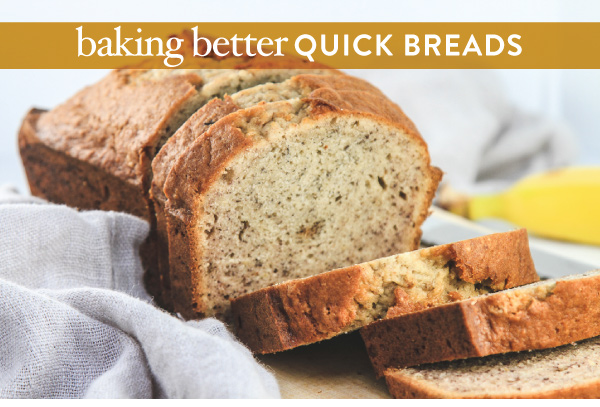 There's nothing like fresh, warm, homemade baked goods. Enjoyed with a steaming cup of coffee or tea, these quick breads make a delightful breakfast or afternoon snack. IN THIS ISSUE, we've set out to discover the key techniques needed for baking quick breads, and practicing the tips with muffins, banana bread, and a coffee cake.
There's nothing like fresh, warm, homemade baked goods. Enjoyed with a steaming cup of coffee or tea, these quick breads make a delightful breakfast or afternoon snack. IN THIS ISSUE, we've set out to discover the key techniques needed for baking quick breads, and practicing the tips with muffins, banana bread, and a coffee cake.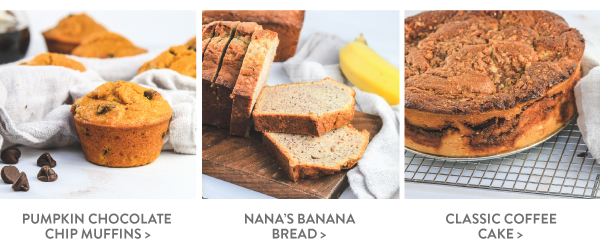

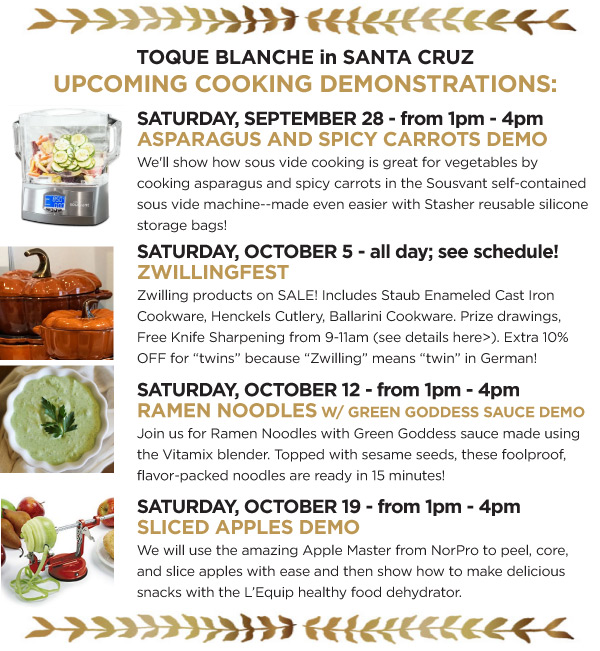



Tools for Making and Enjoying Quick Bread |
|
Hario Drip Pot    One of the simplest and best ways of brewing an excellent cup of coffee. One of the simplest and best ways of brewing an excellent cup of coffee. |
|
Mason Cash Mixing Bowls  Classic ceramic mixing bowls make the best batters for bread, cakes, and muffins. Many sizes available. Classic ceramic mixing bowls make the best batters for bread, cakes, and muffins. Many sizes available.
|
|
Paper Baking Liners  Choose from a wide variety of baking liners that are not only practical for baking, but also serving. Choose from a wide variety of baking liners that are not only practical for baking, but also serving. |
|
Oxo Nonstick Muffin Pan  Great, nonstick baking pan for regularly-sized muffins. Great, nonstick baking pan for regularly-sized muffins. |
|
USA Loaf Pan  A great all-purpose loaf pan that promotes even browning and allows for easy release. Super Sturdy! A great all-purpose loaf pan that promotes even browning and allows for easy release. Super Sturdy! |
|
Nordic-ware Anniversary Bundt Pan  Choose from one of the many bundt pan designs. A bundt pan bakes cakes nicely and is always a lovely presentation. Choose from one of the many bundt pan designs. A bundt pan bakes cakes nicely and is always a lovely presentation. |
September 19, 2019
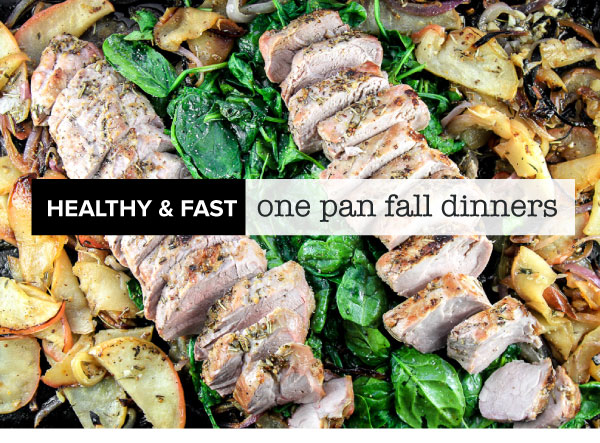
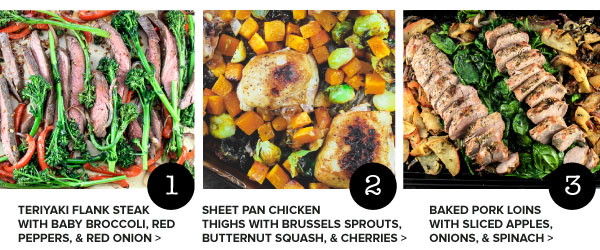
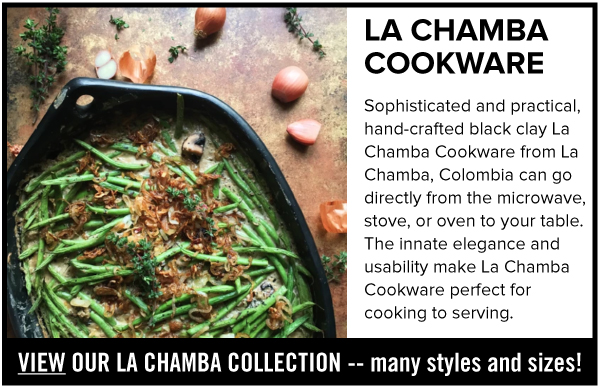



One Pan Dinner Essentials |
Cuisipro Tongs Turn and toss sheet pan ingredients with quality tongs Turn and toss sheet pan ingredients with quality tongs
|
Chic Wrap Parchment Dispense Easily dispense parchment paper and look good while doing it. Easily dispense parchment paper and look good while doing it.
|
USA PAN Sheet Pan Your new secret weapon in the kitchen! USA sheet pans are made with heavy-gauge metal with a rolled rim that won't warp or bend under heat. Your new secret weapon in the kitchen! USA sheet pans are made with heavy-gauge metal with a rolled rim that won't warp or bend under heat.
|
Wooden Whisk A perfect tool for making marinades, sauces, and glazes - a mini whisk is so handy! A perfect tool for making marinades, sauces, and glazes - a mini whisk is so handy!
|
Global 6" Chef's Knife A kitchen workhorse! This classic knife helps you prep dinner in a flash. A kitchen workhorse! This classic knife helps you prep dinner in a flash.
|
Mrs. Anderson's Half Sheet Baking Mat
|
August 22, 2019

August is all about the plentiful, local harvests that grace our kitchens. Corn, beans, summer squash, zucchini, and tomatoes -- it's an abundance of freshness unrivaled by any other time of the year. IN THIS ISSUE, we're focused on the tomato, with three featured recipes that take advantage of these garden fresh, local fruits.Try our recipes for a sweet and savory Tomato Jam, a quick Blistered Caprese Salad, and Homemade Oven "Sun-Dried" Tomatoes showcased in a rich Creamy Pasta Dish.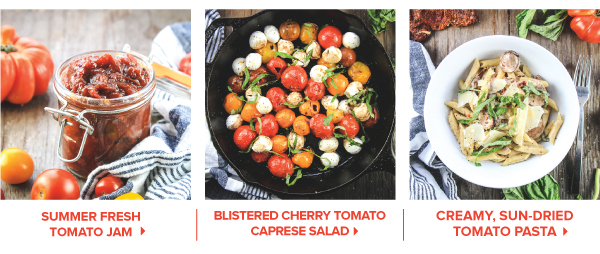





| Tools |
|
Epicurean Cutting Board  Wood composite boards constructed to last for all summer's slicing and dicing! Even dishwasher safe! Made in the USA. Wood composite boards constructed to last for all summer's slicing and dicing! Even dishwasher safe! Made in the USA. |
|
Zyliss Soft Skin Peeler  The micro-serrated, swivel blade makes it easy to skin everything from tomato to peaches ans potatoes! The micro-serrated, swivel blade makes it easy to skin everything from tomato to peaches ans potatoes! |
|
Chef'n Looseleaf Kale and Green Stripper
 A simple device that really works! Trims leaves from stems quickly with herbs, kale and greens. A simple device that really works! Trims leaves from stems quickly with herbs, kale and greens. |
|
Norpro Tomato and Strawberry Corer
 Remove the tough tomato core in a jiffy with this simple, but unique tool. The "toothy" edge grabs the tomato's skin. Very useful for seeding as well! Remove the tough tomato core in a jiffy with this simple, but unique tool. The "toothy" edge grabs the tomato's skin. Very useful for seeding as well! |
|
Wusthof Classic Tomato knife
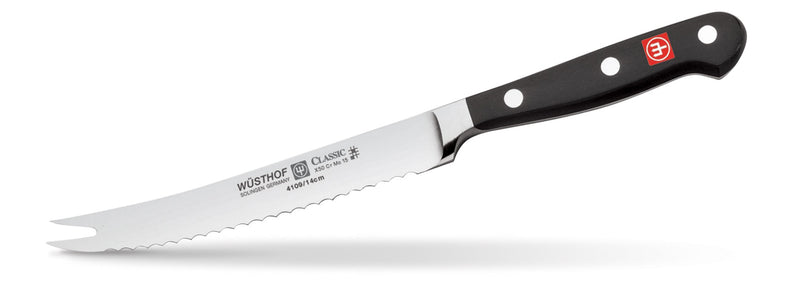 Especially designed for prepping tomatoes, the blade is serrated and features and forked tip for transferring slices. Especially designed for prepping tomatoes, the blade is serrated and features and forked tip for transferring slices. |
|
Zwilling Pro 7" Santoku Knife  A fabulous all-purpose knife that slices and dices all summer produce with ease. A fabulous all-purpose knife that slices and dices all summer produce with ease. |
August 08, 2019

IN THIS ISSUE, we acquaint you with some of our very favorite blueberry desserts. We include three treasured recipes that provide a sweet finish to any summer occasion.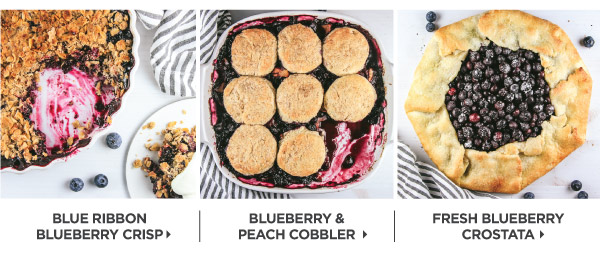





| Tools |
|
Zyliss Ice Cream Scoop   Is Ice cream your favorite dessert topping? Serve it quick and easily with this scoop! Sturdy grip and easy-release scoop. Is Ice cream your favorite dessert topping? Serve it quick and easily with this scoop! Sturdy grip and easy-release scoop. |
|
Emile Henry Baking Dishes  This quality stoneware bakes food evenly and retains its warmth at the table. Many sizes, shapes, and Colors! This quality stoneware bakes food evenly and retains its warmth at the table. Many sizes, shapes, and Colors! |
|
R.S.V.P Precision Pierced Berry Colander  Rinse summer fruits quickly and easily with a sturdy colander that drains quickly. Rinse summer fruits quickly and easily with a sturdy colander that drains quickly. |
|
Bia 8 oz. Au Gratin Bakers
 Individual bakers are fun to use throughout the year, including for serving fresh summer fruit desserts. Individual bakers are fun to use throughout the year, including for serving fresh summer fruit desserts. |
|
Fletcher's Mill French Rolling Pin  Roll Pastry crusts to buttery, flaky perfection with this rolling pin. The beginning to many fine sweet endings. Roll Pastry crusts to buttery, flaky perfection with this rolling pin. The beginning to many fine sweet endings. |
|
Nordic ware Nonstick Oven Liner  It happens... protect your oven from spills and overflows with an easy-to-clean mat that lines the oven's bottom It happens... protect your oven from spills and overflows with an easy-to-clean mat that lines the oven's bottom |
August 02, 2019

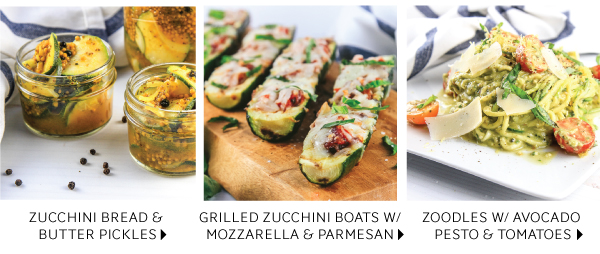




Tools |
|
Global 8" Chef's Knife
|
|
Epicurean Cutting Boards
|
|
Oxo 3 Blade Handheld Spiralizer
|
|
Wusthof Classic 3.5" Paring Knife
 A Sharp paring knife is indispensable when prepping vegetables and fruit. A Sharp paring knife is indispensable when prepping vegetables and fruit. |
|
Oxo Chef's Mandoline
|
|
Cuisipro 6-Sided Box Grater
 This versatile tool is perfect for grating zucchini and so many other things! This versatile tool is perfect for grating zucchini and so many other things!
|
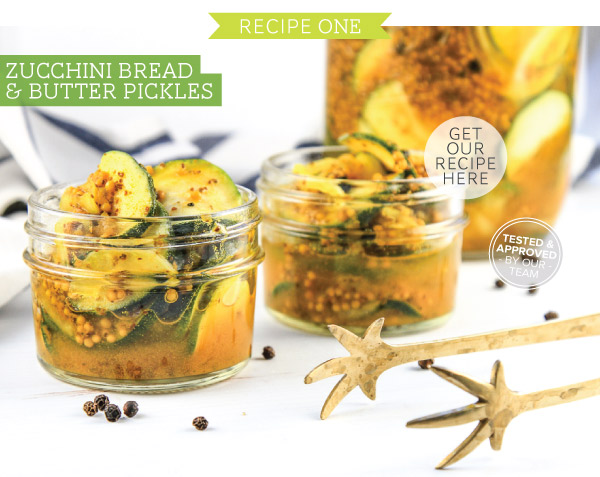

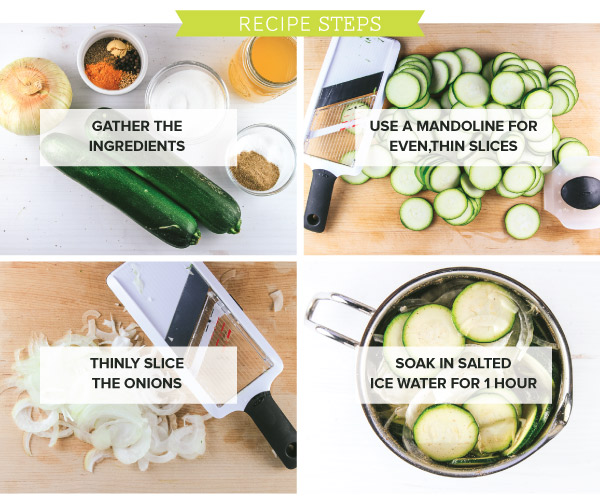
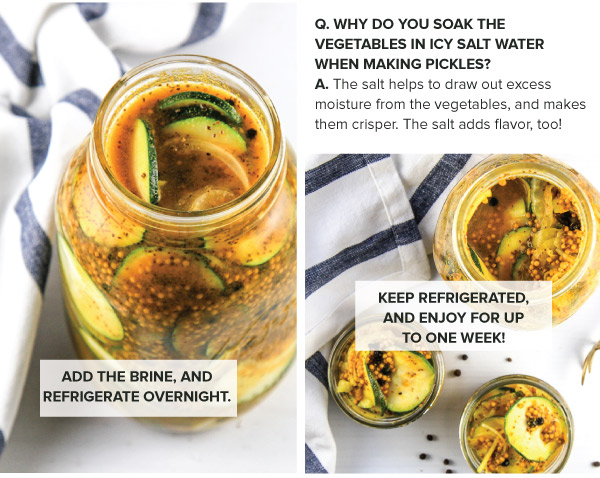
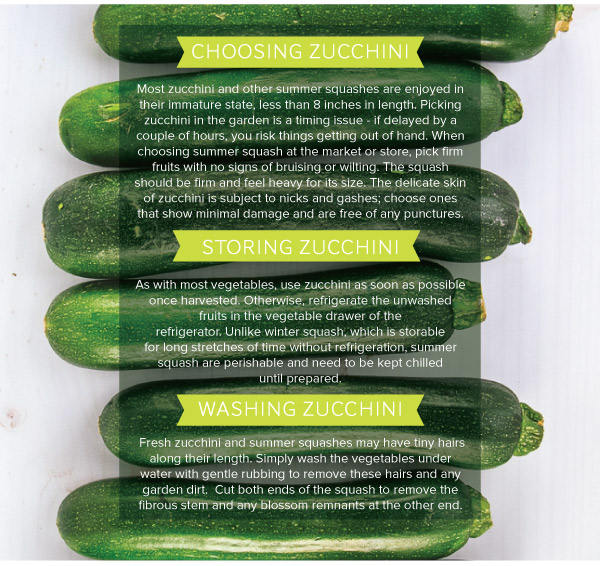

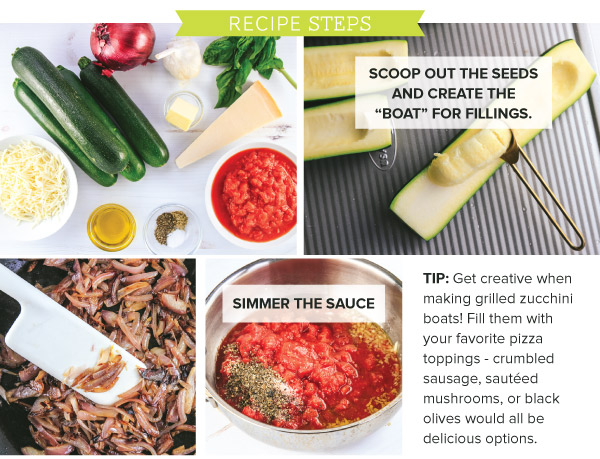
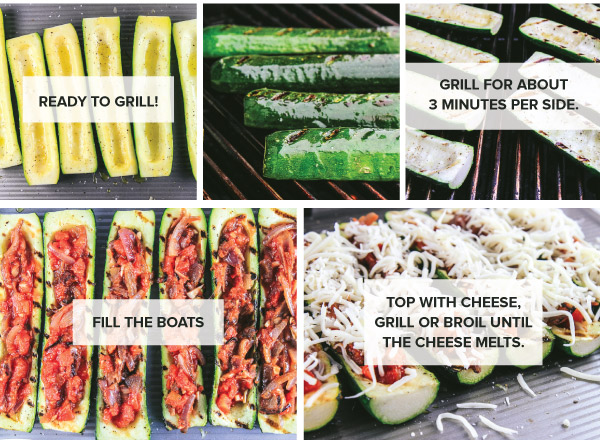
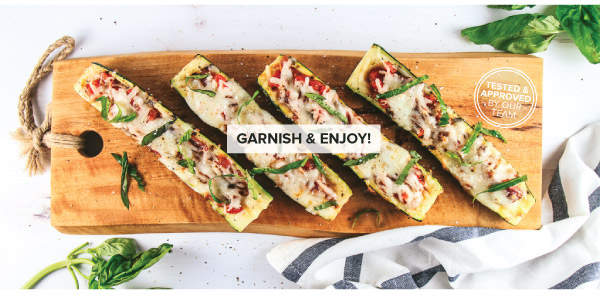
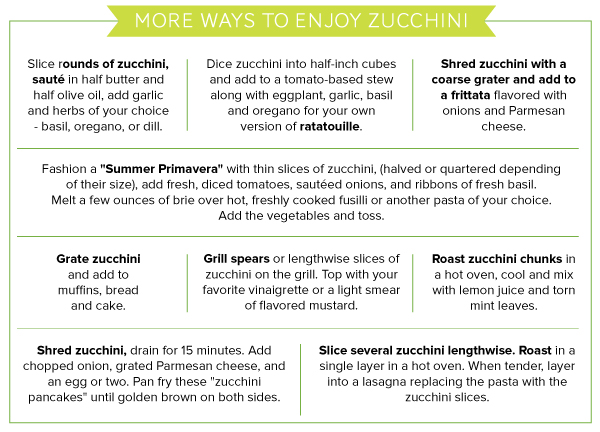
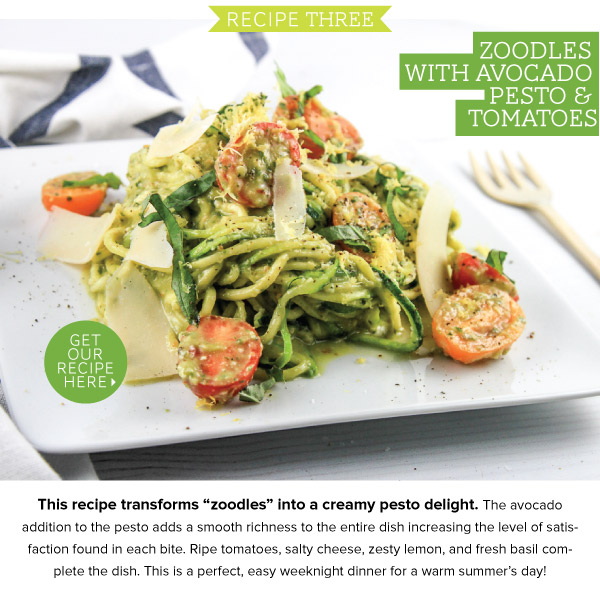
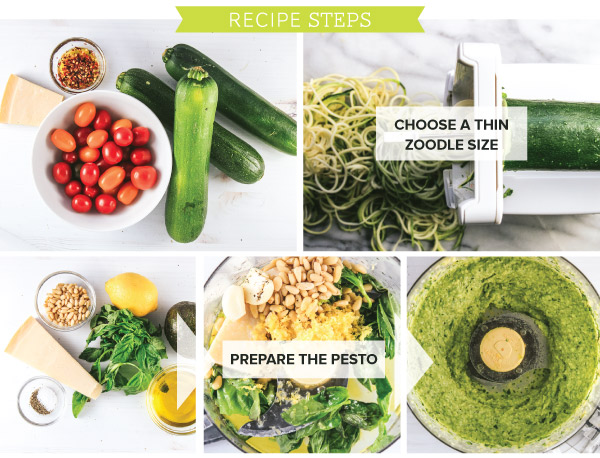
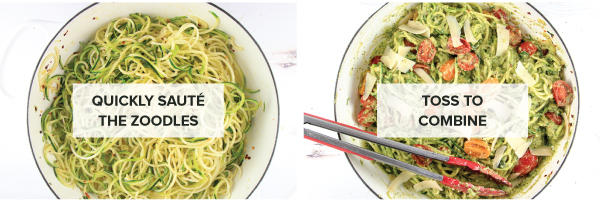
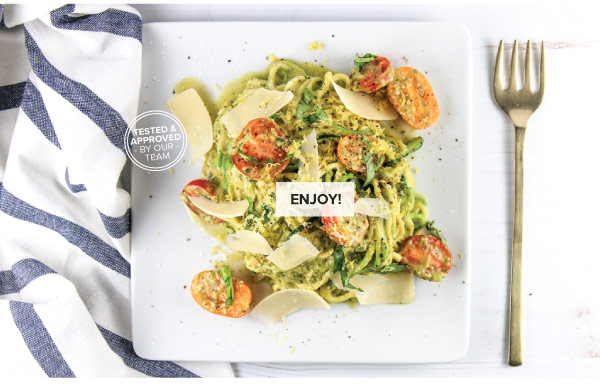


April 11, 2019









Kitchen Essentials for Spring Cooking |
|
Chef'n Freshforce Citrus Juicer  Get every last drop of your citrus with this citrus press. Get every last drop of your citrus with this citrus press.
|
|
Le Creuset 5.5qt. Oven Round  A great pot for roasting chicken! this durable, enameled cast iron pot promotes even braising and roasting. A great pot for roasting chicken! this durable, enameled cast iron pot promotes even braising and roasting.
|
|
Mastrad Silicone Spatula  Better than a wooden spoon! The silicone head is easy to sturdy, yet gentle on all your pans. Easy to clean; odor resistant. Better than a wooden spoon! The silicone head is easy to sturdy, yet gentle on all your pans. Easy to clean; odor resistant.
|
|
Microplane Premium Zester/Grater  Cut through both hard and soft foods effortlessly, without shredding or tearing. Prefect for zesting citrus! Cut through both hard and soft foods effortlessly, without shredding or tearing. Prefect for zesting citrus!
|
|
Wusthof 3.5" Pairing Knife  A great knife for prepping vegetables and fruits quickly and easily. A great knife for prepping vegetables and fruits quickly and easily.
|
|
Nordic Springform Pan  This springform pan is non-stick for easy release and cleaning. The tight locking mechanism prevents messy spills. This springform pan is non-stick for easy release and cleaning. The tight locking mechanism prevents messy spills.
|
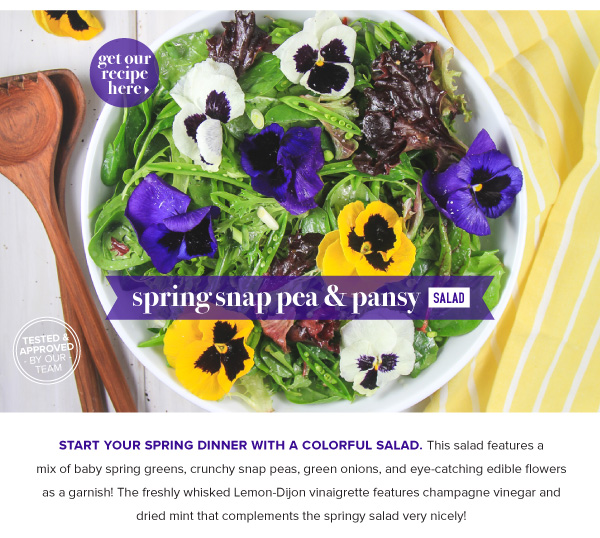
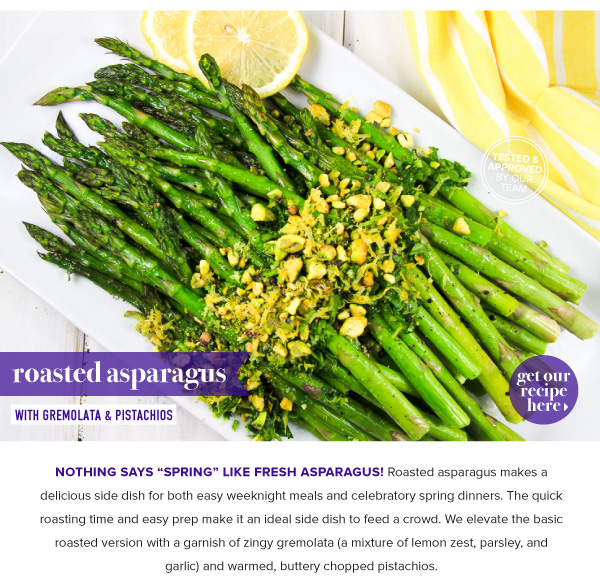
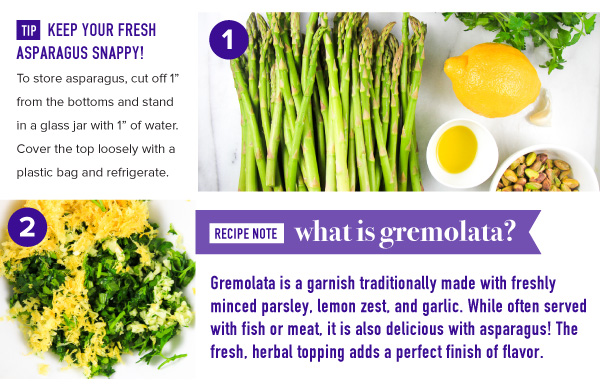

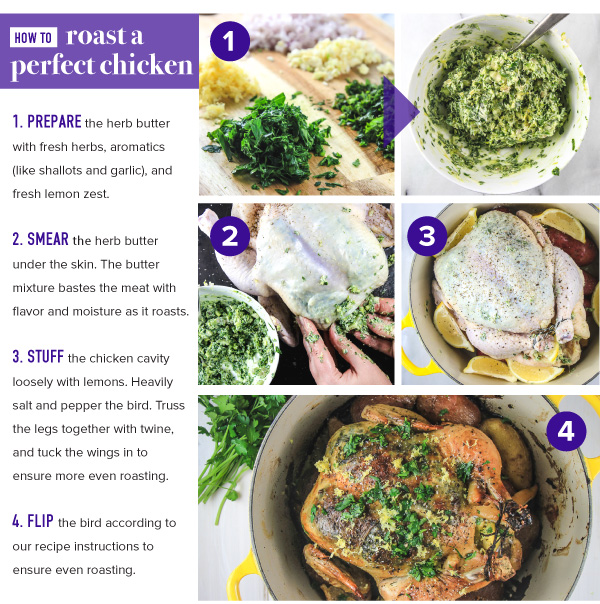

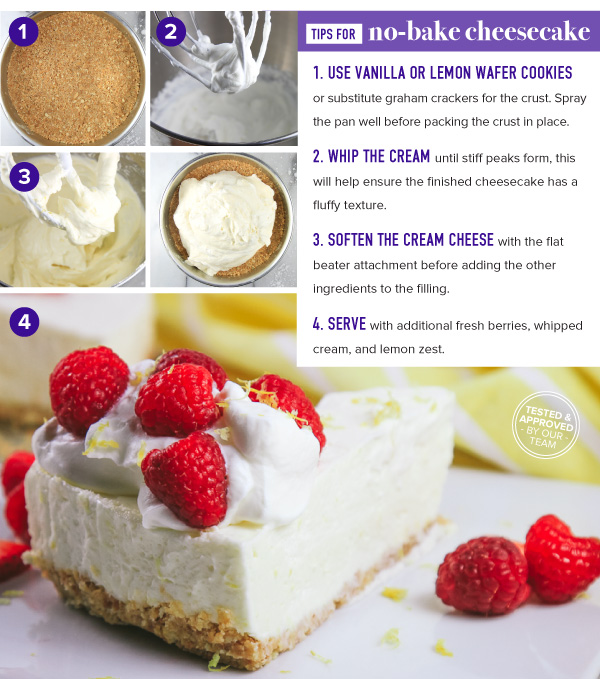

March 07, 2019
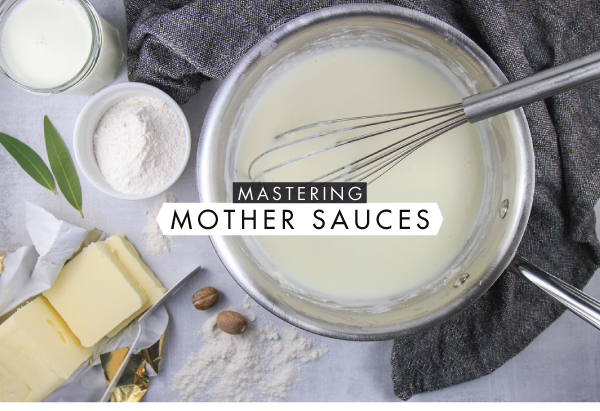
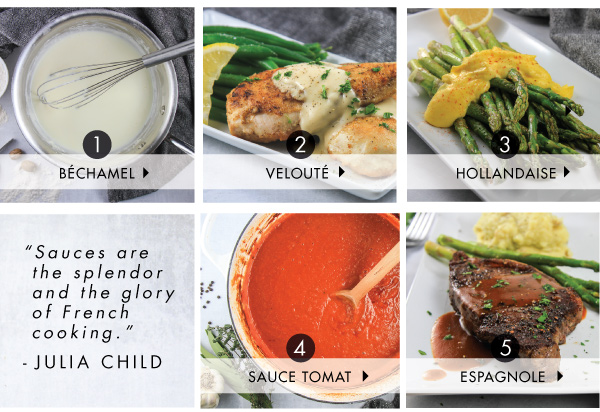







For Making Sauces |
|
Cuisipro Fine Mesh Stainer, 6.25"  Strain out solids, and create super smooth sauces with a fine mesh strainer! Also works well for sifting dry ingredients. Strain out solids, and create super smooth sauces with a fine mesh strainer! Also works well for sifting dry ingredients.
|
|
Mauviel Saucier, 1.7 Qt.  The sides of this saucier are perfect for building sauces! The sides of this saucier are perfect for building sauces!
|
|
Pacific Merchants Beech Spoon, 14"  This spoon is perfect for stirring, mixing, dividing, tasting, turning, and serving foods. This spoon is perfect for stirring, mixing, dividing, tasting, turning, and serving foods.
|
|
BIA Sauce Boat, 16 oz.  Not just for gravy! Serve sauces in style with this ceramic piece that holds the heat nicely. Not just for gravy! Serve sauces in style with this ceramic piece that holds the heat nicely.
|
|
Stainless Steel Balloon Whisk, 10"  A stainless steel whisk is key when making smooth sauces. A stainless steel whisk is key when making smooth sauces.
|
|
Victorinox Fibrox Chef's Knife, 8"  The essential kitchen knife. The chef's knife is an indispensable, all-purpose kitchen knife that can be used for chopping, mincing, slicing, and dicing. |
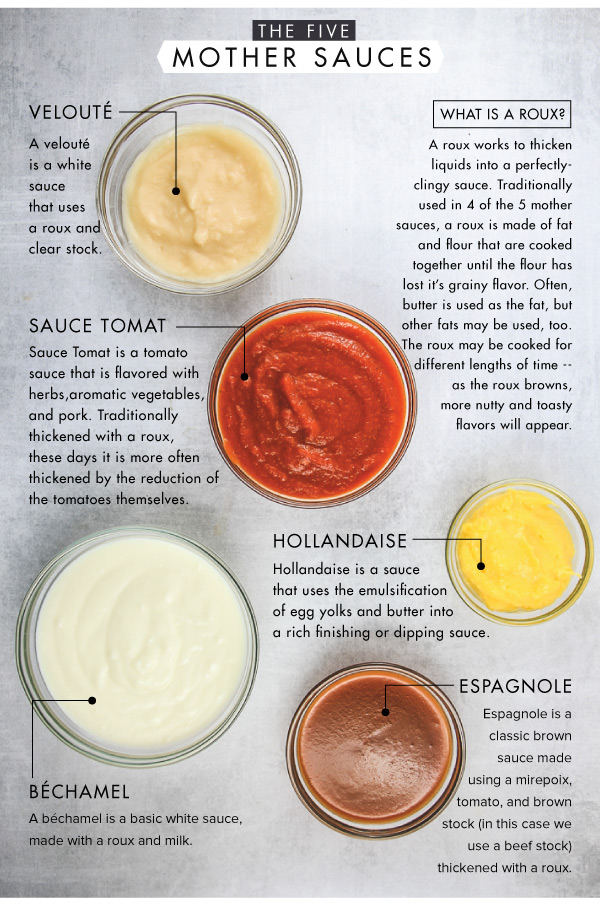
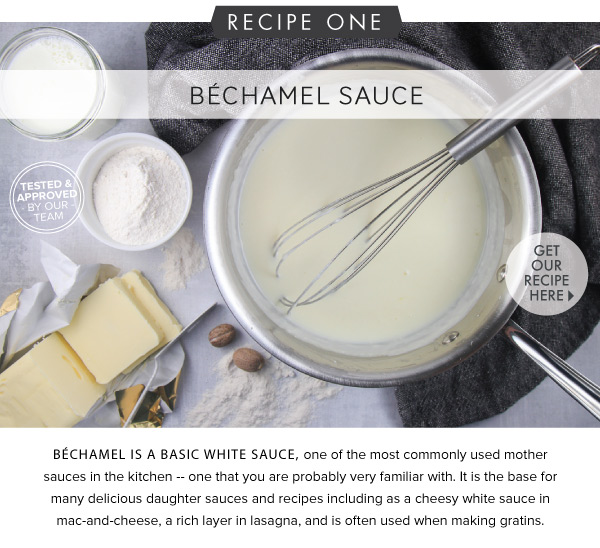
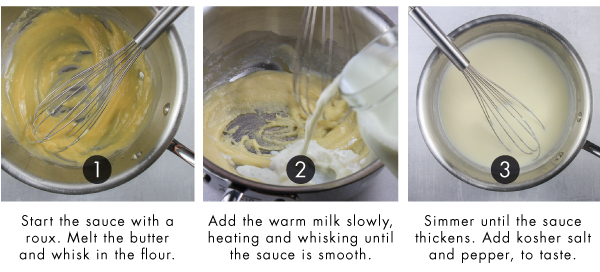
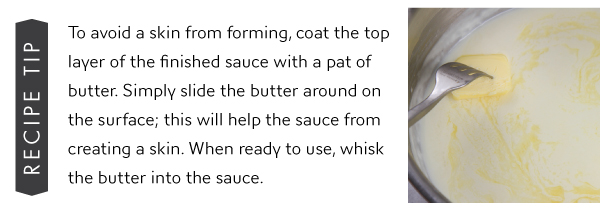
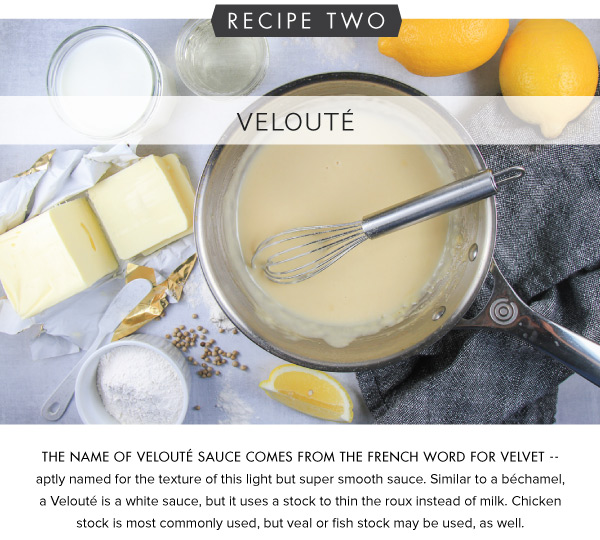
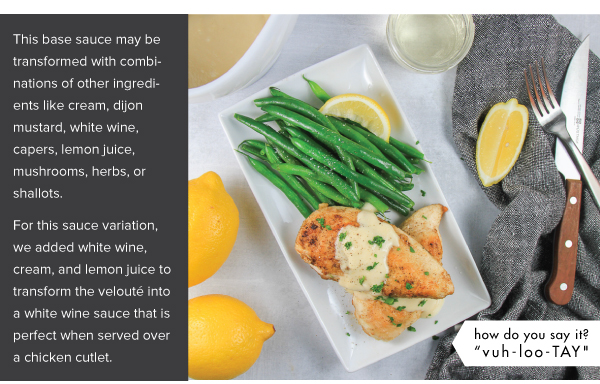

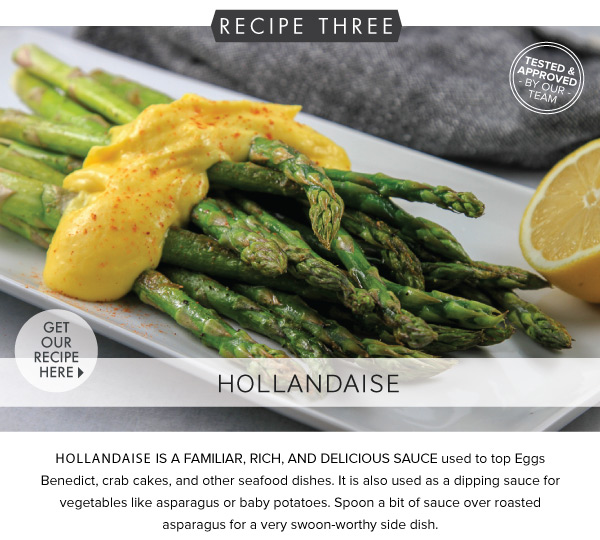
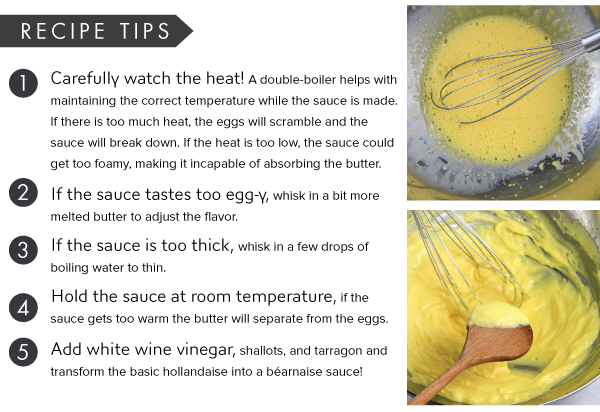
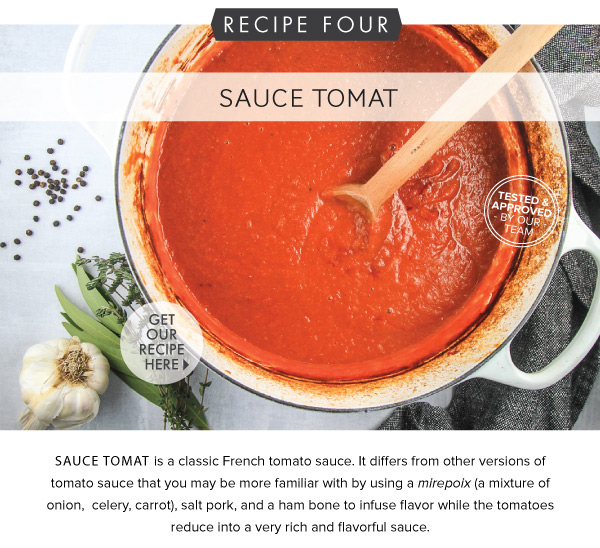
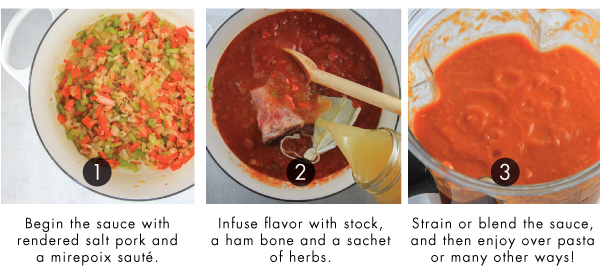
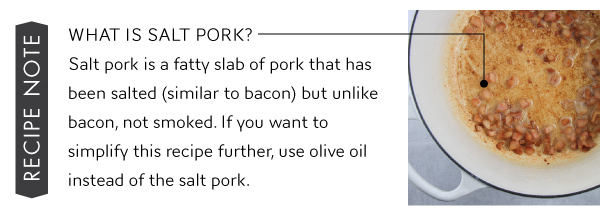
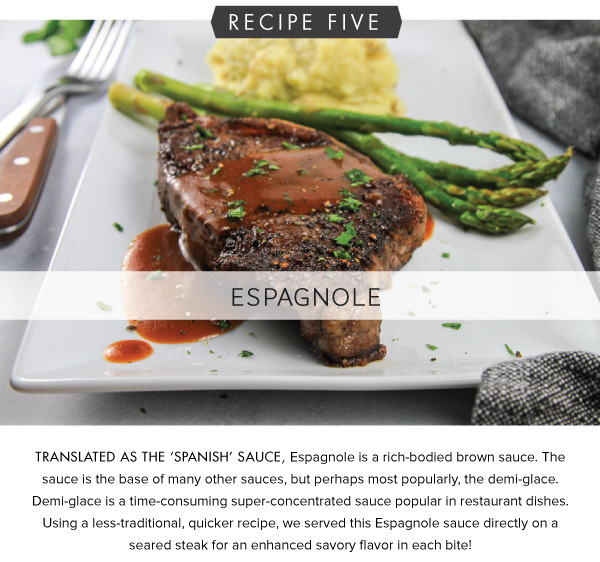
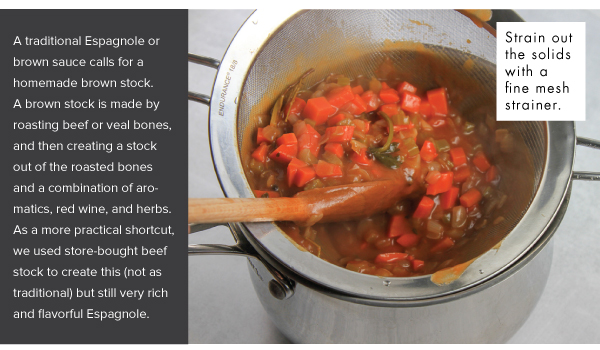
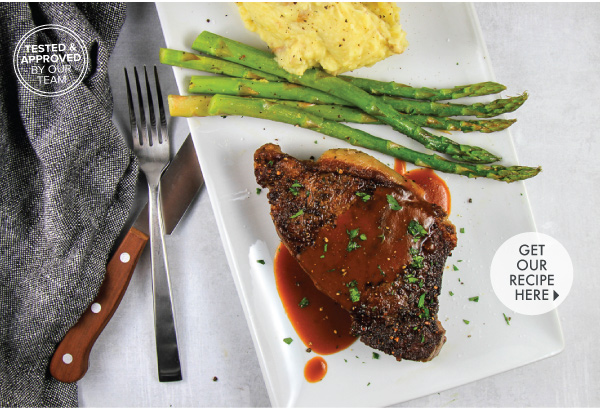
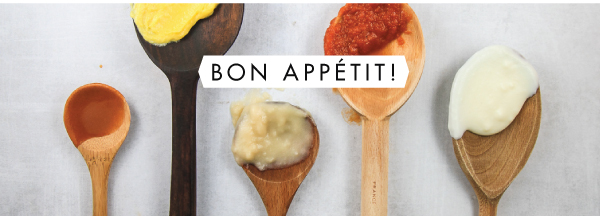

March 07, 2019
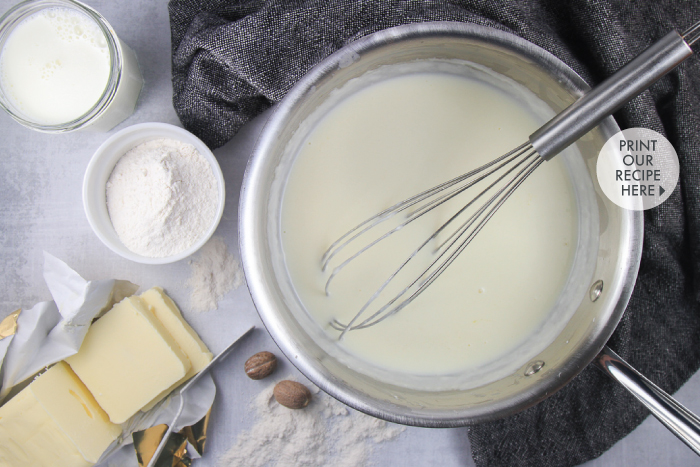
Makes about 2-1/2 to 3 cups
Béchamel is a basic white sauce, one of the most commonly used mother sauces in the kitchen -- one that you are probably very familiar with. It is the base for many delicious daughter sauces and recipes including as a cheesy white sauce in mac-and-cheese, a rich layer in lasagna, and is often used in gratins.
Ingredients:
4 tablespoons butter
1/4 cup all-purpose flour
3 cups whole milk, warmed
Kosher salt
Freshly ground black pepper
Directions:
1. Prepare the roux. In a saucier or saucepan, heat 4 tablespoons of butter. Once the butter has melted, whisk in the flour until the mixture is completely smooth. Continue cooking and stirring for about 2 minutes, but don't let it brown. This process removes the raw flour flavor and helps create a silky sauce.
2. Create the béchamel sauce by very slowly pouring the milk into the roux. Continue whisking the mixture until the sauce is smooth. Bring the mixture to a boil, then lower the heat and continue stirring while the sauce simmers and begins to thicken. Add Kosher salt and pepper, to taste. Continue whisking over medium-low heat for another 3-5 minutes until the sauce thickens and becomes very creamy. The consistency of the sauce should be thick enough to coat the back of a spoon.
3. From here, you can get creative with other flavor additions like nutmeg, cayenne, or crushed red pepper. Further, transform the sauce by adding grated cheese like Gruyère to make a Mornay sauce.
4. To avoid a skin from forming on the top of the sauce, coat the top layer of the finished sauce with a pat of butter. Simply slide the butter around on the surface, this will help keep the sauce from creating a skin. When ready to enjoy, whisk the surface butter into the sauce.
March 07, 2019
The name of velouté sauce comes from the French word for velvet - aptly named for the texture of this light but super smooth sauce. Similar to a béchamel, a velouté is a white sauce, but it uses stock to thin the roux instead of milk. Chicken stock is most commonly used but veal or fish stock may be used, as well.
This base sauce may be transformed with combinations of other ingredients like cream, Dijon mustard, white wine, capers, lemon juice, mushrooms, herbs, or shallots. For this sauce variation, we added white wine, cream, and lemon juice to transform the velouté into a tasty white wine sauce that is perfect when served over a chicken cutlet.
Basic Velouté Sauce
Makes about 1-1/2 cups
Ingredients:
3 tablespoons butter
3 tablespoons flour
2 cups chicken broth, warmed
Kosher salt and freshly ground white pepper, to taste
Directions:
1. In a saucier or saucepan, melt the butter. Add the flour, and whisk together until a thick roux is formed. Heat and stir the roux until it turns golden brown and smells nutty, about 3-4 minutes.
2. Slowly add the warmed broth to the roux while continuously whisking. Whisk the sauce until smooth and well-combined. Bring to a low simmer, and cook for about 20 minutes until the sauce has reduced by 1/3, and is thick enough to coat the back of a spoon. Add salt and pepper, to taste.
__
White Wine Velouté Sauce
Makes just over 1-1/2 cups
Ingredients:
1-1/2 cups Chicken Velouté sauce (above)
1/4 cup dry white wine
1/4 cup heavy cream
2 teaspoons of fresh lemon juice, more to taste
Kosher salt and freshly ground white pepper, to taste
Directions:
1. In a small saucepan, bring the wine to a low simmer, and boil until it reduces by half.
2. Add the veloute sauce to the wine and simmer for about 5 minutes. Add the cream, stir, and bring to a simmer.
3. Add the fresh lemon juice, and season to taste with additional lemon juice; salt and pepper, as needed.
4. Serve the white wine sauce over chicken, fish, or roasted vegetables.
March 07, 2019
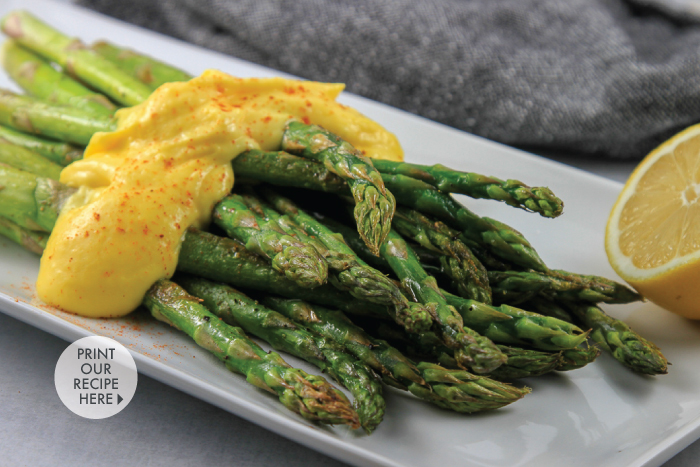
Makes about 1-1/2 cups
Hollandaise is a familiar, rich, and delicious sauce used to top Eggs
Benedict, crab cakes, and other seafood dishes. It is also used as a dipping sauce for vegetables like asparagus or baby potatoes. Spoon a bit of sauce over roasted asparagus for a very swoon-worthy side-dish.
Ingredients:
8 egg yolks
4 tablespoons fresh lemon juice
1 tablespoon cold water
1 cup (2 sticks) butter, melted
Pinch of cayenne (optional)
Salt and pepper, to taste
Directions:
1. In a large bowl, combine the egg yolks, lemon juice, and water. Whisk vigorously until the volume almost doubles.
2. In a double boiler over simmering water, continue whisking the egg yolks and lemon juice. Continue to whisk until the eggs begin to thicken. As this process happens and the egg mixture heats, it might thin out temporarily, then re-thicken. Continue whisking, and wait for the mixture to thicken. Then, slowly add the melted butter until the sauce is combined and smooth. The sauce should be thick enough to coat the back of a spoon.
3. Add the cayenne, salt, and pepper to taste, and set aside. Hold the sauce at room temperature; if the sauce gets too warm the butter will separate from the eggs.
4. Serve over roasted asparagus, baby potatoes, Eggs Benedict, crab cakes, or seafood.
March 07, 2019
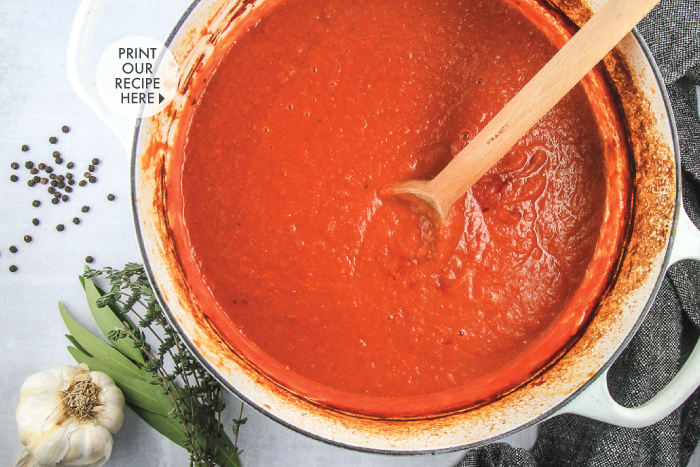
Makes about 8 cups
Sauce Tomat is a classic French tomato sauce. It differs from other versions of tomato sauce that you may be more familiar with by using a mirepoix (a mixture of onion, celery, carrot), salt pork, and a ham bone to infuse flavor while the tomatoes reduce into a very rich and flavorful sauce.
Ingredients:
2 ounces salt pork, chopped
2 cups yellow onions, finely diced
1 cup carrots, finely diced
1 cup celery, finely diced
1 clove garlic, crushed
2 (28-ounce) cans crushed tomatoes
4 cups chicken stock
1 ham bone
Pinch kosher salt, to taste
Pinch of sugar, to taste
For the Sachet:
1 bay leaf
3 sprigs fresh thyme
8-10 black peppercorns
Directions:
1. In a large Dutch oven, render the salt pork until the fat has been released.
2. Add the onion, carrots, celery, and garlic and sauté until the onion is translucent about 5 minutes.
3. Use a small sachet, or make one out of cheesecloth for the bay leaf, thyme and peppercorns. After the sauce has cooked, the sachet is easy to remove from the sauce before pureeing.
4. Add the crushed tomatoes, stock, ham bone, and the sachet of herbs.
5. Bring the sauce to a simmer, stir, and then cover.
6. Bake in a 300-degree oven for 1-1/2 to 2 hours, or until the sauce has thickened and reduced by about one-third.
7. Remove the ham bone and sachet from the sauce. Taste the sauce and season with additional salt, pepper, and a pinch of sugar, as needed. If you desire, you may then blend the sauce with an immersion blender or blender. Or, you may strain the sauce through a fine mesh strainer to remove any solids.
March 07, 2019
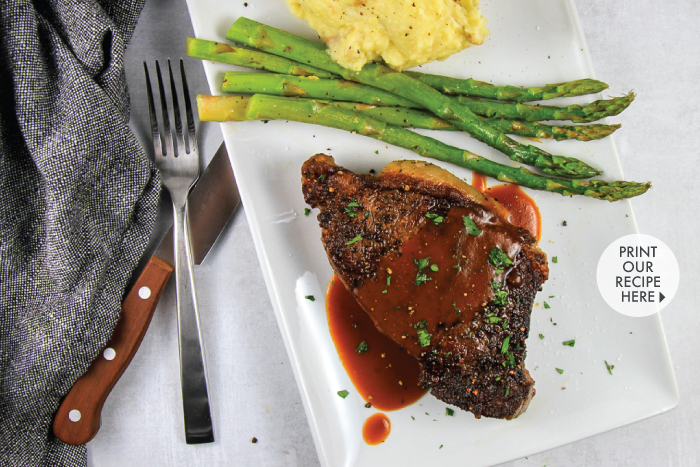
Makes about 2 cups
Translated as the ‘Spanish’ sauce, Espagnole is a rich-bodied brown sauce. The sauce is the base of many other sauces, but perhaps most popularly, the demi-glace. Demi-glace is a time-consuming super-concentrated sauce popular in restaurant dishes. Using a less-traditional, quicker recipe, we served this Espagnole sauce directly on a seared steak for an enhanced savory flavor in each bite!
Ingredients:
1/2 stick butter
1 onion, chopped
1 carrot, chopped
1 celery rib, chopped
1/4 cup flour
4 cups beef stock
1/4 cup tomato puree
10 whole black peppercorns
1 bay leaf
2 sprigs fresh parsley
2 sprigs fresh thyme
Directions:
1. In a saucier or saucepan, melt the butter and sauté the onion, carrot, and celery until the onion is translucent.
2. Sprinkle the sautéed vegetables with flour, and stir to form a roux. Let the roux become browned, but monitor carefully to avoid scorching or burning.
3. Once the roux has a nutty smell and is a darker brown, add the beef stock, tomato puree, peppercorns, bay leaf, parsley, and thyme.
4. Simmer the sauce for about 20-30 minutes or until it has thickened and reduced by about one-third.
5. Skim off any excess fats or oils that have risen to the surface.
6. Strain the sauce using a fine mesh strainer to remove the solids.
7. Serve the brown sauce as is, or refine it further into a demi-glace or red wine sauce. Freeze any excess Espagnole sauce in an airtight container, and use within one month.
